What’s the Difference Between Types of Rice?
Rice is one of the most commonly eaten foods in the world and is a staple for in much of the globe's diet. I tend to make a big batch of rice at least once a month and eat it for countless number of meals. But, for something that we eat so often, how much do we really know about it? What is rice? What's the difference between the various kinds? And how exactly are you supposed to cook them??
It's almost impossible to talk about rice without the cultural significance that's intertwined with the history of cultivation and preparation of rice. It can be easy to forgo this when simply picking out a variety of rice amongst all of the others in the grocery store. With so many colors and varieties, getting overwhelmed is understandable. But it's not quite as magical and mystical as we sometimes make it out to be! Oftentimes, the dish that you're planning often determines the type of rice. And a peripheral understanding of the different types of rice and their uses can save you from mushy rice in curry or sticky rice in paella.
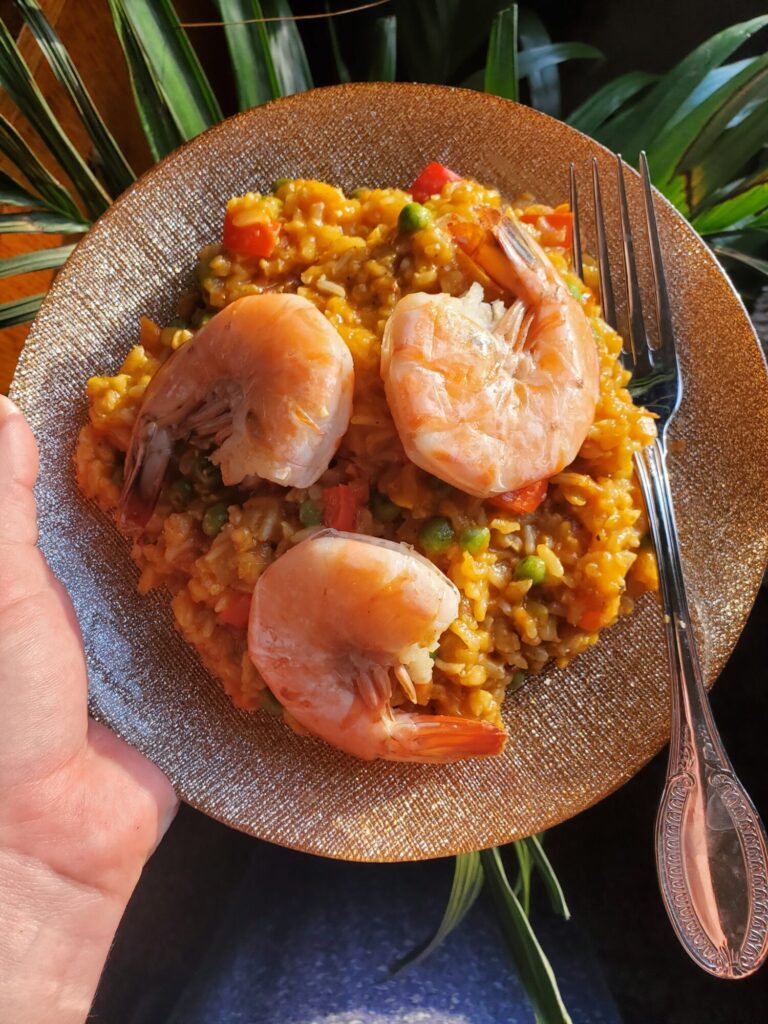
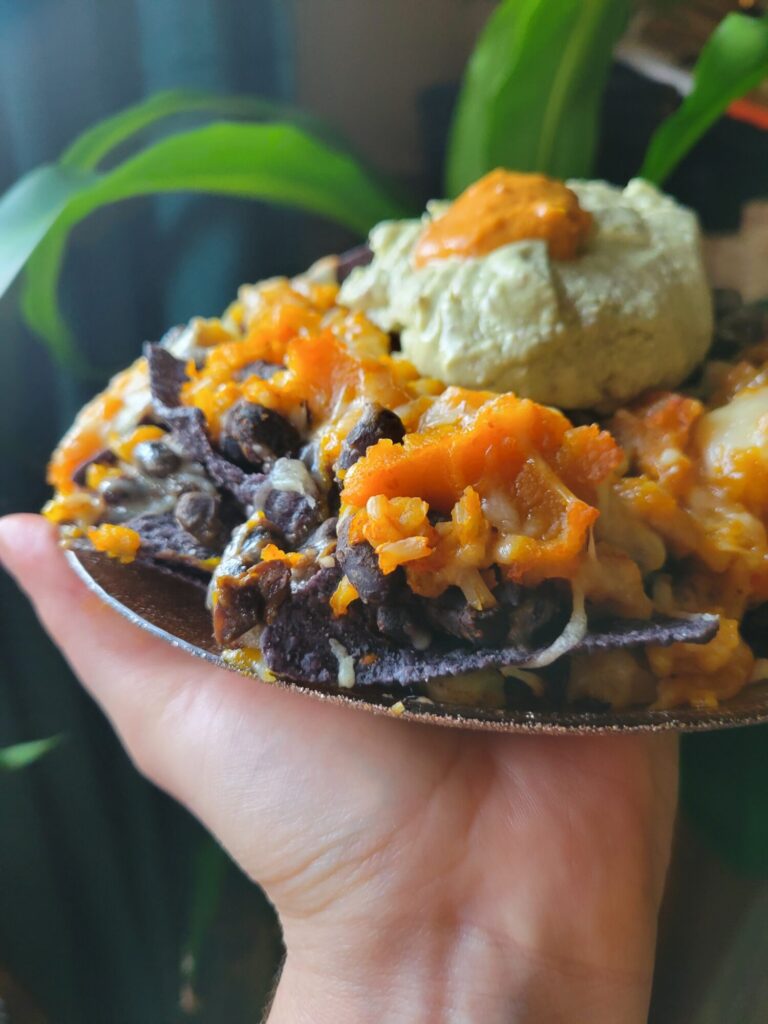
What IS Rice?
We like to think of rice as being... well, rice. It's a category onto its own! Rice is actually the seed of aquatic grass. They're grown in marshes or wetlands and need 6-8 inches of water to grow. Often today this means that fields are flooded to accommodate the need for moisture. Although more traditionally rice was grown in natural wetlands and harvested by boat or canoe.
Rice is a naturally gluten free. Although it is considered a grain along with wheat, oats, corn, barley, sorghum, rye, millet, and other cereal grains. "Grains" or "cereal grains" tend to describe seeds in the Poaceae (Grass Family). There are also "pseudo-cereal grains," which include amaranth, buckwheat and quinoa, which are not a part of the Poaceae (Grass Family), which aren't seeds of grains, but seeds of various other plants. They are often lumped into this category because of their similarity in appearance and manor of cooking (Grains & Legumes Nutrition Counsel, Types of Grains).
Despite the poor reputation that grains have endured over the last decade, they are a relatively healthy staple of much of the world's diet. Particularly whole and unprocessed grains are incredibly nutritious and rice is no exception to this. I don't necessarily like to talk about "health food" because I don't like how this plays into diet culture and the false belief that taste and nutrition must be diametrically opposed. But this "grain-free" attitude eliminates both good and bad grains without differentiation between highly processed corn syrup and highly nutritious rice varieties.
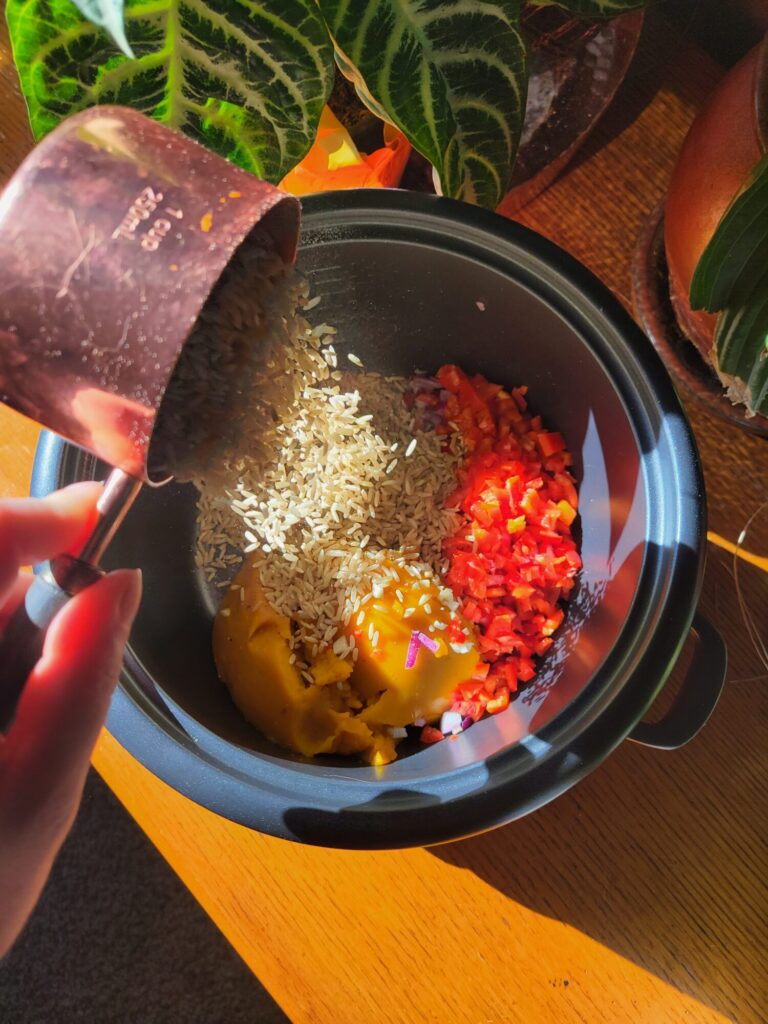
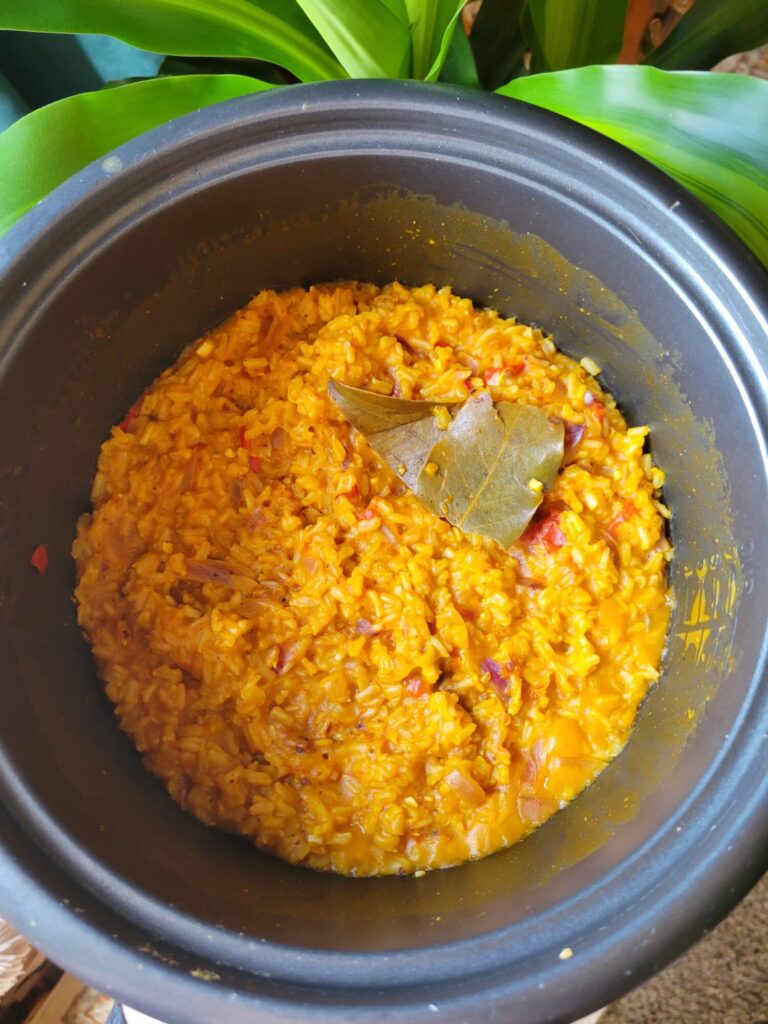
Taxonomy of Rice
There are two main types of rice: Asian and African. Although we kind of grandfather in wild rice, which is neither wild nor a true rice. The vast majority of edible rice varieties are Oryza sativa (Asian rice). Although there are a number of Oryza glaberrima (African rice) species that are the siblings of Oryza sativa (Asian rice). These are both of the Oryza L. (Rice) genus and what we commonly think of when we think of "rice." On the other hand, wild rice are of the the Zizania L. (Wildrice) genus, which are more like cousins of rice but lumped into the same category because of their resemblance and similar cooking method.
graph TD A["Kingdom (6)"]-->B["Subkingdom (1)"] B-->C["Superdivision (1)"] C-->D["Division (5)"] D-->E["Class (2)"] E-->F["Subclass (5)"] F-->G["Order (7)"] G-->H["Family (2)"] H-->I["Genus (347)"] I-->J["Species (7)"] P["Plantae (Plants)"] P==>R["Tracheobionta (Vascular Plants)"] R==>X["Spermatophyta (Seed Plants)"] X==>AG["Magnoliophyta (Flowering Plants)"] AG==>AH["Liliopsida (Monocotyledons)"] AH==>AL["Commelinidae"] AL==>AP["Cyperales"] AP==>AW["Poaceae (Grass Family)"] AW==>AZ["Oryza L (Rice)"] AW-->BE[" Zizania L. (Wildrice)"] AZ==>BG["Oryza glaberrima Steud. (African Rice)"] AZ==>BL["Oryza sativa L. (Asian Rice)"] BE-->DA["Zizania palustris L. (Northern Wild Rice)"] BE-->DB["Zizania aquatica L. (Wild Rice)"] style A fill:#7dac2f style B fill:#7dac2f style C fill:#7dac2f style D fill:#7dac2f style E fill:#7dac2f style F fill:#7dac2f style G fill:#7dac2f style H fill:#7dac2f style I fill:#7dac2f style J fill:#7dac2f style P fill:#cdcd10 style R fill:#cdcd10 style X fill:#cdcd10 style AG fill:#cdcd10 style AH fill:#cdcd10 style AL fill:#cdcd10 style AP fill:#cdcd10 style AW fill:#cdcd10 style AZ fill:#cdcd10 style BG fill:#cdcd10 style BL fill:#cdcd10 style BG fill:#cdcd10
(USDA, Classification for Kingdom Plantae Down to Species Oryza sativa L.)
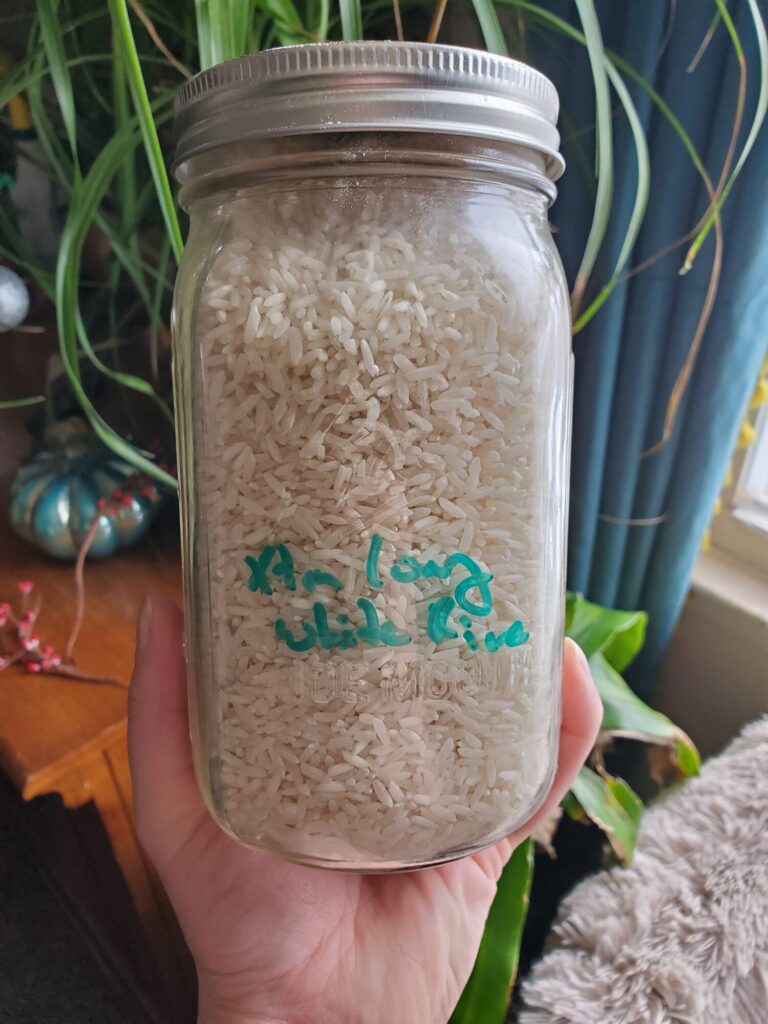
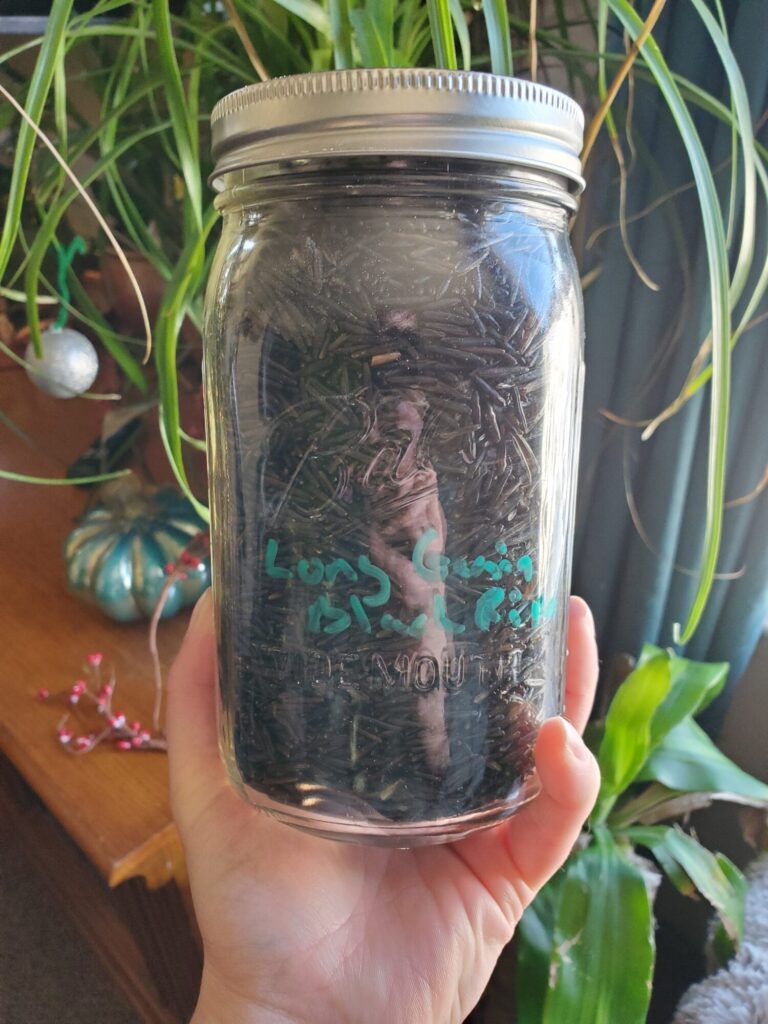
Types of Rice
Often we make the distinction between white rice and brown rice. However, there are a plethora of rice varieties in between. There are more than 40,000 types of rice. It's heralded as being a universal food, with almost every culture having a national rice dish, that is consumed more than any other food in the world (The Rice Association, Types of Rice).
Since there are so many different types of rice, it tends to be broken down into certain categories. Most rice comes in white or brown, is categorized by short-, medium-, and long-grain, and then subdivided by type of rice, including arborio, basmati, jasmine, etc.
Generally, which rice you want depends greatly on what you plan on making with it. If you want to make sushi, you get sushi rice. For making curry, you usually opt for basmati rice. If you want to make risotto, you pick arborio rice. Although you can absolutely mix and match, the region of cultivation or origin of the dishes are almost inextricably linked to the type of rice.
There is no rule to what rice you have to choose, though. And I often find myself using what I can find at the time. Particularly with brown rice, there aren't always as many options! I might prefer brown basmati rice, but make do with short grain brown rice because I can buy it in bulk at Costco. So, don't feel too limited by these distinctions. There are only a few dishes that can't relatively easily be substituted.
White Rice
White rice is the standard. Much like how white flour is created by removing the wheat germ from grain, white rice is created by removing the bran and germ. This makes white rice significantly less nutritious than brown rice. Although it is often preferred because of its lighter and fluffier texture when compared to brown rice, which tends to have a chewier consistency.
More often than not, you're probably going to end up with white rice at restaurants. It's generally the less expensive rice variety. It's incredibly economic to buy and can often be found in bulk in most stores. White rice also has very little flavor of its own and takes on the flavor of the dish well. This makes it relatively simple to make and easier to work with than its brown rice counterparts.
White rice comes in the full range of short-, medium-, and long-grain, and is available in almost every type of rice. There are some exceptions to this, but almost every rice has a white rice variety.
- 1:1 or 1½ white rice-to-water ratio
The amount of water will depend highly on the type, but white rice tends to need the least amount of water to cook and this is usually a good place to start!
Brown Rice
Brown rice is the white rice counterpart with the bran and germ intact. This makes it far more nutritious than white rice. It is a little denser and takes slightly more finagling to cook. Poorly cooked brown rice can be hard and chewy with a slightly bitter flavor. However, brown rice is delicious when prepared correctly. It has a nuttier taste and keeps its shape much more than white rice varieties. This often makes it more versatile and more forgiving when cooked in comparison to white rich, which can easily be overcooked and become starch-laden.
Almost every variety of white rice has a brown rice counterpart. There are some exceptions to this where the bran and germ makes the rice virtually inedible because it would be almost impossible to actually cook. But, for the most part, you can find a brown rice counterpart to your favorite white rice variety.
- 1:2 brown rice-to-water ratio
Black Rice
In addition to the typical white and brown rice, there is also black rice. Much like brown rice, it also has the bran and germ intact. This makes it more nutrient-rich than white rice varieties. Although it does tend to cook slightly faster and with less water than brown rice.
Black rice also has the distinction of being a naturally black food. Because of its rarity, in many cultures it's heralded as being reserved for the elite or ruling class. This is particularly true in China where it's known as forbidden or Emperor's rice, as it was exclusively reserved for the members of the royal family and forbidden to everyone else. Hence the moniker.
There are also several other black rice varieties, including black jasmine rice, black Indonesian rice, black sticky rice, and black Japonica rice. Although black Japonica rice is a crossbreed between short grain black rice and medium grain mahogany rice, making it less prominent and more purple in appearance. In all black rice varieties, the black is actually a very deep purple caused by elevated anthocyanins. Over rinsing or soaking can dilute this coloration and is often discouraged because of this.
- 1:2 black rice-to-water ratio
Red Rice
Unlike most rice varieties, red rice is eaten with its hull intact. This is not the same as with brown rice, where the hull is removed but the bran and germ are still present. In almost all cases, the hull is inedible. However, red rice is the exception. This makes it more nutritious than any of the other rice varieties. It also has a prominent nutty taste and chewier texture than many other rice.
The red hue of the rice comes from the hull, which has a higher concentration of anthocyanins. This is the same component that gives blueberries, raspberries, cabbage, and chocolate their color. It's also what gives black rice its hue, although in higher concentration.
Red rice is often cultivated in France, India, and Africa, although it can be found across the globe in several different varieties. The most commonly found red rice in the United States is Himalayan red rice, Thai red cargo rice, Bhutanese Red rice, and Kerala Matta rice.
- 1:2 red rice-to-water ratio
Wild Rice
Contrary to its namesake, wild rice isn't actually "wild" or in fact "rice." Wild rice is often lumped into the category of rice because of its similarity in taste and texture. However, it isn't a true rice. It's actually a part of the Zizania L. genus and not the Oryza L. genus that rice traditionally belongs to. This might all sound like scientific chatter, but it makes them cousins in the Poaceae (Grass Family). Wild rice just as closely related to bamboo as it is actual rice.
Wild rice also isn't "wild" at all. Very little rice in the world is "wild" in the sense of growing wild. The vast majority of rice in the world is highly cultivated and wild rice is no exception!
Despite its complicated nomenclature, wild rice is quite similar to black rice in taste and cooking method. Although it often has a variety of hues and isn't uniform in color. The coloration comes from anthocyanins, which are the same pigmentation found in red and black rice.
Wild rice is often cultivated in the United States and comes in several varieties. The most commonly edible one is Northern wild rice Zizania palustris. It was traditionally harvested by indigenous people in canoe and is a practice that still occurs to this day (Eden Foods, Wild Rice Notes).
- 1:3 wild rice-to-water ratio
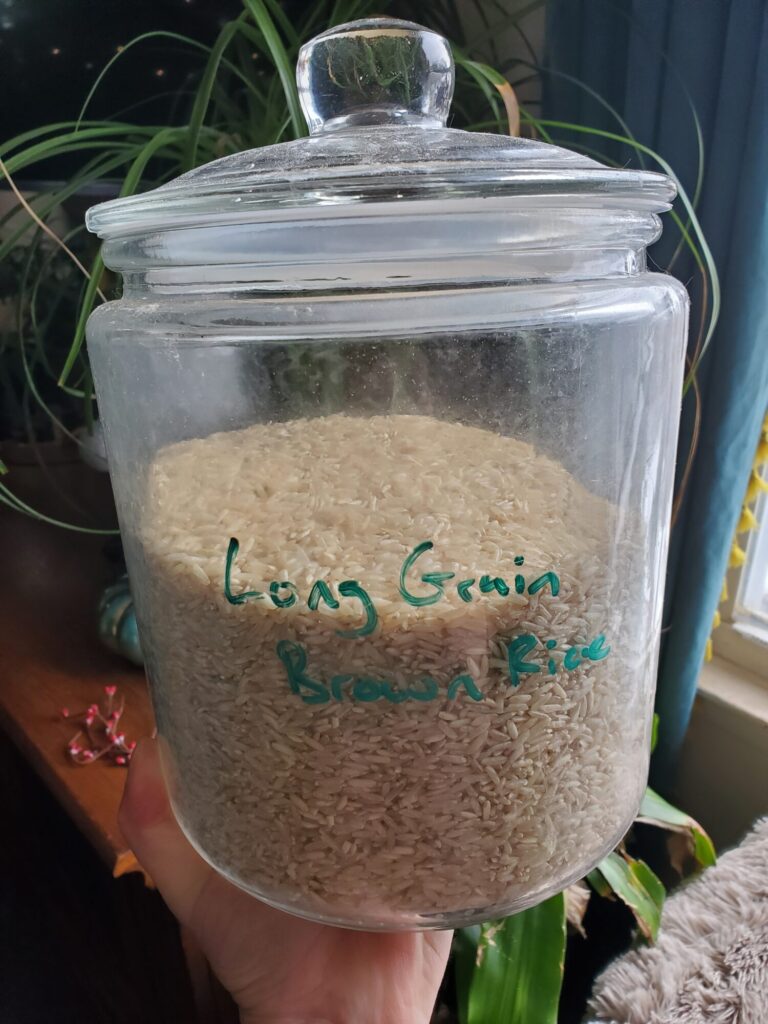

Size of Rice
There are three general lengths of rice: short-grain, medium-grain, and long-grain. Occasionally you'll come along "extra long-grain" or other varieties. Although most rice will fall into one of these three categories.
Rice gets its characteristics largely from the length of rice and starch content. It usually contain both amylose and amylopectin and the stickiness of the rice depends on the proportion between the two starches. Rice that's higher in amylose will be lighter and fluffier than rice lower in amylose, which will be denser and gelatinous. Likewise, rice that's higher in amylopectin will be starchier than rice lower in amylopectin, which will be considerably less sticky.
Short-grain Rice
Short-grain rice tends to have lower levels of amylose and higher levels of amylopectin. Generally speaking, this will result in a stickier and more gelatinous rice. Examples of these are short-grain bomba and glutinous rice, which are often used for paella and dishes such as sushi, sticky rice, and rice pudding. These rice varieties tend to expand in width, rather than length, and often need less water and a shorter cook time than their longer-grain counterparts.
- 1:1 white rice-to-water ratio
- 1:2 brown rice-to-water ratio
Medium-grain Rice
Medium-grain rice tends be less sticky and more creamy than short-grain rice. The quintessential medium-grain rice varieties are arborio and carnaroli, which are used for risotto and known for maintaining its shape and having an al dente bite on the inside, while also softening on the outside and having a creamier consistency. It's often used in puddings and other desert items as well due to its ability to absorb a higher moisture content without becoming mushy or oversaturated.
- 1:1½ white rice-to-water ratio
- 1:3 brown rice-to-water ratio
Long-grain Rice
Long-grain rice tend to be three to five times longer than they are wide. They tend to have higher levels of amylose and lower levels of amylopectin, resulting in a rice that's less gelatinous when cooked. Long-grain rice tends to maintain its shape to the point where you can pick out individual pieces of rice without them sticking together. Basmati and jasmine are prime examples of long-grain rice. Although jasmine does have higher levels of amylopectin and is slightly creamier than basmati. Both are more common in soups, stews, and curries.
- 1:2 white rice-to-water ratio
- 1:2 brown rice-to-water ratio
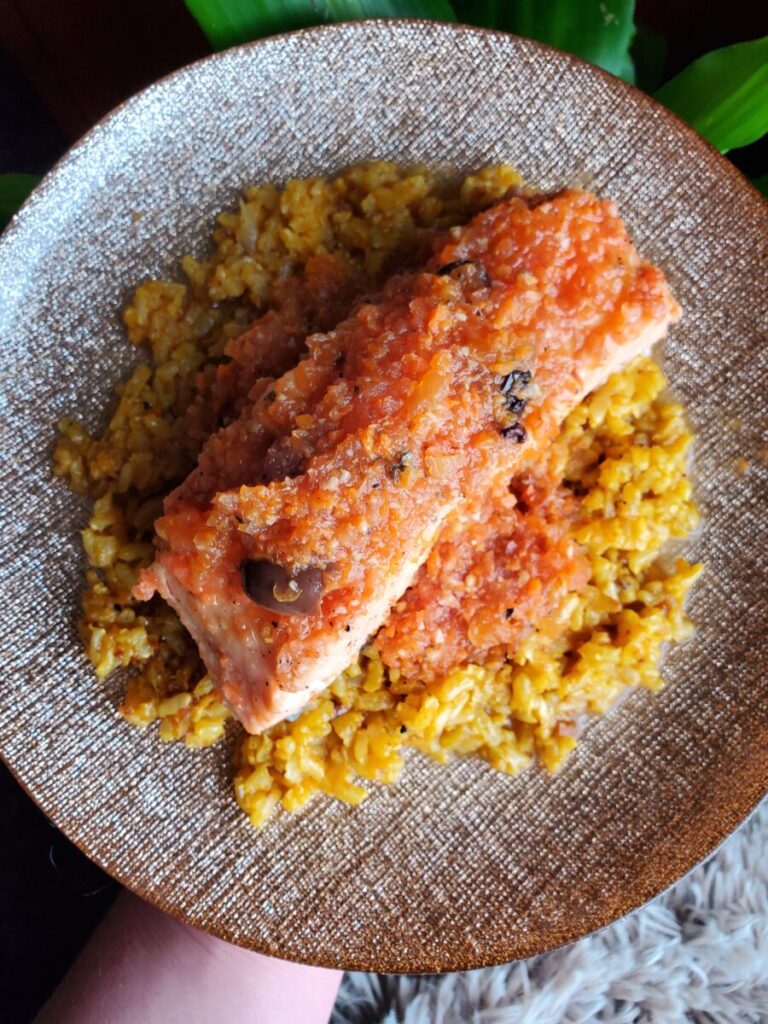
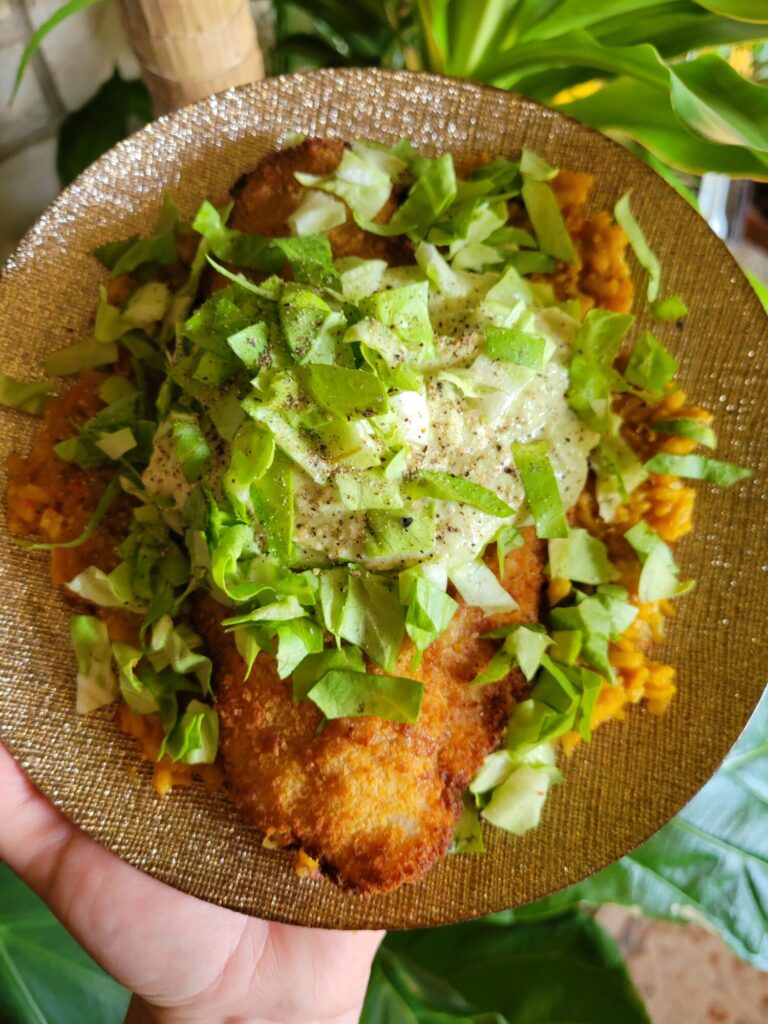
Varieties of Rice
There are a plethora of varieties of rice. Many of these have both white and brown counterparts. Much of the time, the variety of rice is closely linked to the region that it's cultivated and dishes that it's utilized for.
Arborio Rice
Arborio rice is a medium-grain rice that is often known for being the rice of choice for risotto. It's native to the Piedmont region in Italy, where it gets its namesake. Arborio rice goes through less of a milling process than longer grain rice varieties. This means that it maintains higher levels of amylopectin, a starch that releases when cooked. This gives risotto its classic creamy consistency. That also means that it's one of the only rice varieties that isn't rinsed before cooking because doing so would wash off the starch that gives arborio rice its signature texture (The Spruce Eats, What Is Arborio Rice?).
Arborio rice is also known for having a pearl-like color and a little bit of a chewiness about it when compared to other white rice varieties. It's often cooked al dente to maintain the creaminess of the dish, but with a little bit of bite in the center. Arborio does have a brown rice counterpart. Although less common, it is usually available in grocery stores and can be used to make risotto. It will just require more time and water to cook. It does help that arborio rice is often cooked al dente and supposed to be a little denser than some other rice dishes.
Substitutions for Arborio Rice
Arborio rice gets its signature starchiness from higher levels of amylopectin. Although arborio has a notably higher level of this than most, amounts of it are present in all rice and in more concentrated quantities in shorter grain rice varieties. Carnaroli rice rice contain a higher starch content than arborio rice. There is even some debate that this makes it more suitable for risotto than arborio. I've also seen glutinous, sticky, and sushi rice substituted in a pinch, but these are less common.
How to Cook Arborio Rice
- 1:1½ white rice-to-water ratio
- 1:3 brown rice-to-water ratio
You may need to double or triple this amount when making risotto, which requires slowly simmering in a saucepan. Usually with broth or stock, instead of water, and typically with the addition of butter, white wine, and parmesan. Although arborio rice can absorb up to a 1:6 ratio, particularly when slowly cooked.
Basmati Rice
Basmati is known as an aromatic rice and is often cooked with spices to enhance this property. Often cultivated in foothills of the Himalayas in India and Pakistan, basmati rice is a long-grain rice that is ideal for rice pilaf and curry dishes. Even the white rice varieties have a slight nutty flavor and are heralded as being one of the highest quality rices (The Spruce Eats, What Is Basmati Rice?).
Substitutions for Basmati Rice
Basmati is similar to jasmine rice and can often be used interchangeably. Both are fragrant, long-grain rices that are very similar in appearance. Although basmati rice tends to be less starchy and has a fluffier consistency.
How to Cook Basmati Rice
- 1:1½ white rice-to-water ratio
- 1:2 brown rice-to-water ratio
Basmati rice is often cooked separately as a side dish for curry or in a rice pilaf with broth. It's typically soaked and then simmered on the stovetop or in a rice cooker.
Bomba Rice
Bomba, otherwise known as Valencia rice, is a short-grain white rice cultivated in Spain. It works well in broths and is best known for being the go-to rice in paella. This is because it's particularly good at holding its shape. Bomba rice expands outward, instead of lengthwise, and can absorb three times its weight in liquid before bursting. Because of this, it has aptly been given the name "bomba," which is Spanish for "bomb." It's most commonly cultivated in Spain in the Murcia mountains neighboring Valencia. Hence it's other moniker, "Valencia" rice (The Spruce Eats, A Guide to the Most Popular Types of Rice).
Bomba rice is often known for being the opposite of Arborio or other risotto rice varieties that don't hold their shape as well when cooking and are intentionally utilized in creamier dishes.
Substitutions for Bomba Rice
Substitutions for bomba rice often include Senia, Bahia, and Calasparra rice. Senia and Bahia are similar short-grain rice varieties grown in Spain. They will absorb almost as much water and still retain their texture and consistency, albeit perhaps a little bit creamier. Calasparra is also often substituted for paella recipes as well. It's a rice based out of Calasparra, Murcia, and is often confused for bomba rice given the same consistency and region of cultivation. However, Calasparra is not a specific strain of rice. Rather, it's the region that rice is grown in and generically labeled as "Calasparra." It can include any number of similar rice varieties grown in the area, including bomba, Ballila, and Sollana, amongst others (Delishably, What's so Special About Spanish Paella Rice?).
None of these varieties are common in the United States, where you're more likely to come across bomba or even generically labeled "paella" rice. These tend to make for a fine substitution in a pinch. I've also seen people substitute brown, black, and wild rice, given their similar starchiness and ability to hold their shape when cooked. Although these are far less traditional.
How to Cook Bomba Rice
- 1:3 white rice-to-water ratio
Since brown rice is white rice with the bran and germ still in tact, it's conceivable that there are brown Bomba rice varieties. However, I've never seen them sold in stores. Brown rice tends to need roughly twice as much water to cook as white rice. So, I suspect that a rice that would require six times the amount of water would be slightly less feasible to actually cook!
Carnaroli Rice
Carnaroli is medium-grain rice that is cultivated in Northern Italy. It's often considered the unparalleled rice for making risotto. Outside of Italy, it has more of a cult following and is largely unavailable outside of specialty shops. It's also almost exclusively used for making risotto. Although there are recipe to be found for making rice puddings and other dishes that require absorbing large amounts of water without overcooking or turning to mush.
Substitutions for Carnaroli Rice
Carnaroli often referred to as the “king” or the “caviar” of Italian rice and is largely believed to be the superior rice for risotto, it can be more difficult to find than some other varieties. Because of this, arborio rice is often used to make risotto outside of Italy. Both are high in starch content and have a softer consistency, while still maintaining their shape. This gives them both a creamier cook, while still maintaining the al dente consistency that risotto is known for. Carnaroli has a slightly higher starch content and is often viewed as the superior risotto rice because of this. Although either can be substituted for one another (The Spruce Eats, Arborio Rice Substitutes for Risotto).
How to Cook Carnaroli Rice
- 1:3 white rice-to-water ratio
Brown carnaroli rice does exist. You can purchase it online or at well stocked specialty stores. Although it's incredibly difficult to find and I've never seen it used before. You'd be hard pressed to determine the liquid ratio or cooking time (believe me, I looked!). But it is theoretically possible. I would assume that it would cook much like arborio rice where the brown rice ratio would roughly double.
Glutinous Rice
Glutinous rice is often referred to as Japanese, sticky, sushi, or sweet rice. It comes in both short- and long-grain varieties and is known for its glue-like consistency. Glutinous rice is the go-to rice for sushi, dumplings, and mochi. Contrary to its namesake, glutinous rice doesn't actually contain gluten. Rather, it gets this moniker because of its ability to be used as a binding agent. This occurs because it has next-to-none of the starch amylose and considerably higher amounts of the starch amylopectin, resulting in its quintessential gluey consistency.
Substitutions for Glutinous Rice
There are no substitutes for glutinous rice. Although it goes by numerous names and you will find various different monikers for it in grocery stores. As long as the grain size is consistent with your recipe, these are largely interchangeable. Just don't attempt to use something like arborio or basmati rice. None of the other rice varieties will have a similar enough starch content to substitute!
How to Cook Glutinous Rice
- 1:1½ white rice-to-water ratio
- 1:2 brown rice-to-water ratio
Glutinous rice is often steamed, typically in a bamboo steamer, because it allows the rice to more evenly and gradually release starch. It also needs to be soaked in order to soften before cooking. It's recommended that glutinous rice be soaked for at least 30 minutes, but a longer soak will provide a greater depth of flavor. When used in other recipes and not served on its own, glutinous rice can be soaked and added uncooked (The Spruce Eats, What Is Sticky Rice?).
Jasmine Rice
Jasmine is a long-grained aromatic rice that originated in Thailand. It's named after the jasmine flower, not for its fragrance, but for its similarity to the color of the petals. Although jasmine rice is jasmine rice is one of the more aromatic rice varieties. It also has a higher amount of amylopectin and is quite sticky when cooked. Because of these characteristics, jasmine rice is often used as a side to soups and stews (The Spruce Eats, What Is Jasmine Rice?).
Substitutions for Jasmine Rice
Jasmine and basmati rice are often used interchangeably. They're both an aromatic long-grain rice. Although jasmine has a slightly less pronounced flavor, both are commonly used in similar dishes.
How to Cook Jasmine Rice
- 1:1½ white rice-to-water ratio
- 1:2 brown rice-to-water ratio
- 1:2 black rice-to-water ratio
Jasmine rice also comes in white, brown, and black varieties. Black jasmine rice tends to be referred to as forbidden rice. Jasmine rice tends to be soaked before being steamed, with the exception of black jasmine rice because this will dilute the color.
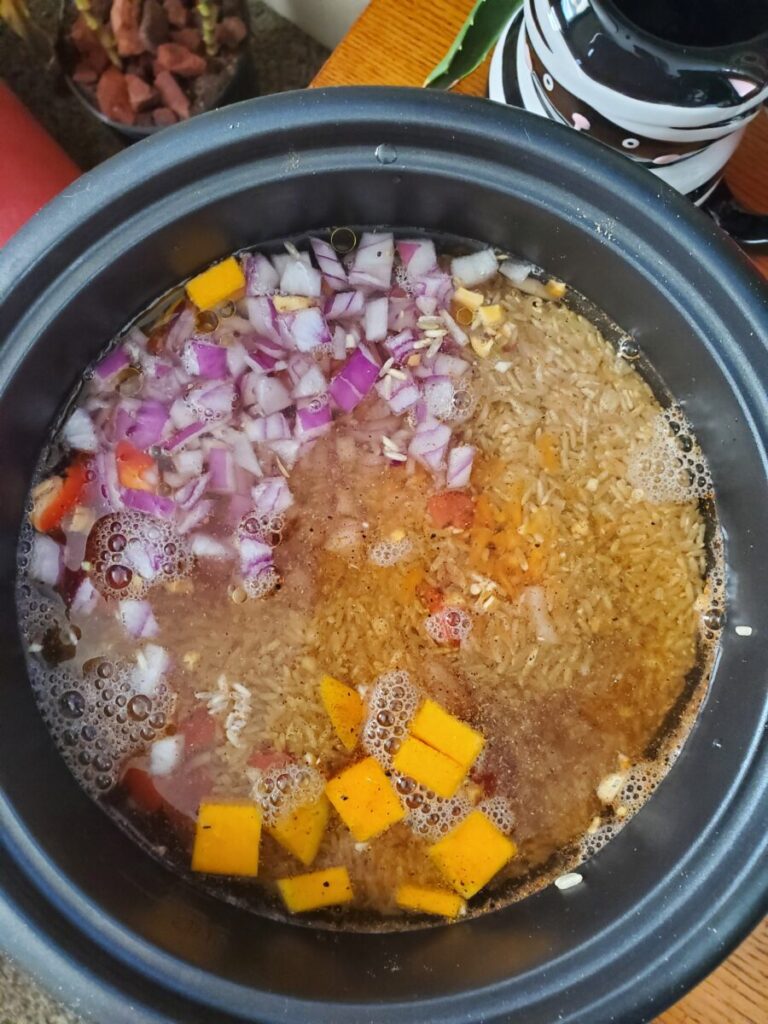
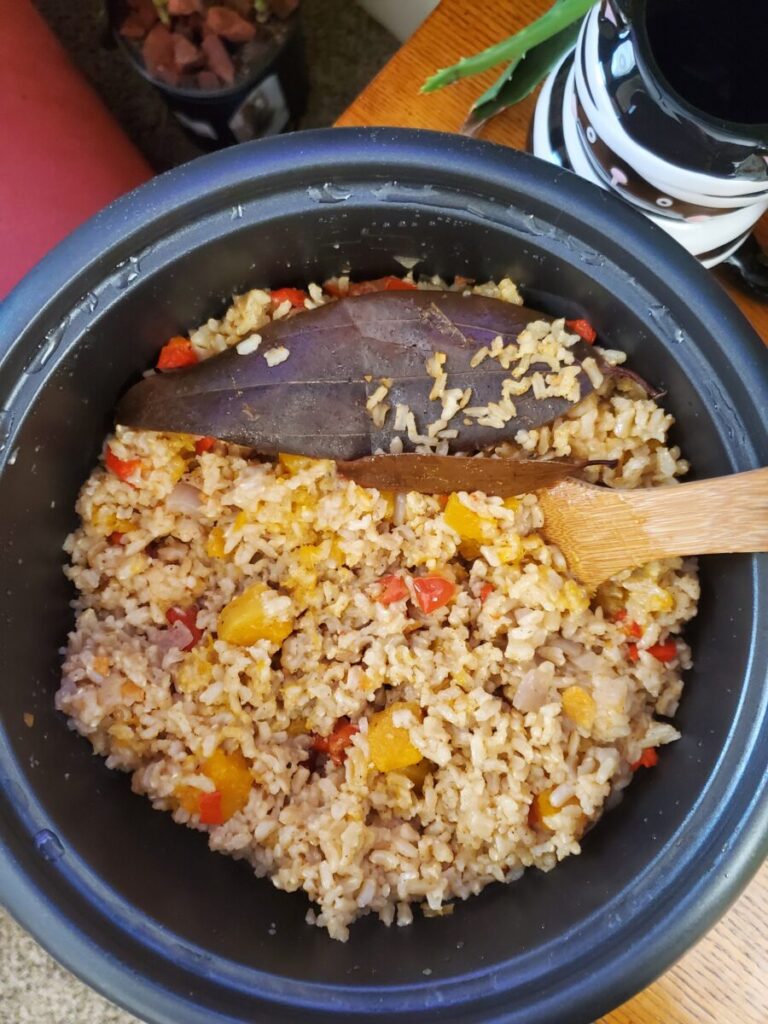
Ratio of Rice-to-Water
I have listed general ratios of rice-to-water that you will need in order to cook rice. Although the ratios may change depending on the dish and cooking method. The dish that you're making often determines the rice that you'll need and more exact specifications. Because of this, simply following the prescribed ratios, even on the packaging or what I've outlined here, might lead you astray! But this is a good place to start.
| Rice | Rice-to-Water White | Rice-to-Water Brown |
| White Rice | 1:1 or 1½ | - |
| Brown Rice | - | 1:2 |
| Black Rice | - | 1:2 |
| Red Rice | - | 1:2 |
| Wild Rice | - | 1:3 |
| Short-grain Rice | 1:1 | 1:2 |
| Medium-grain Rice | 1:1½ | 1:3 |
| Long-grain Rice | 1:2 | 1:2 |
| Arborio Rice | 1:1½ | 1:3 |
| Basmati Rice | 1:1½ | 1:2 |
| Bomba Rice | 1:3 | - |
| Carnaroli Rice | 1:3 | - |
| Glutinous Rice | 1:1½ | 1:2 |
| Jasmine Rice | 1:1½ | 1:2 |
I also have a companion article on The Fundamentals of Cooking Rice for more information on the common pitfalls of rice preparation, potential solutions for common missteps, and how to make brown rice more palatable. Because it is actually delicious when cooked properly! Brown rice has a reputation for being hard and chewy, but this doesn't have to be the case and it is possible to make soft and tender brown rice that is both appetizing and nutritious.
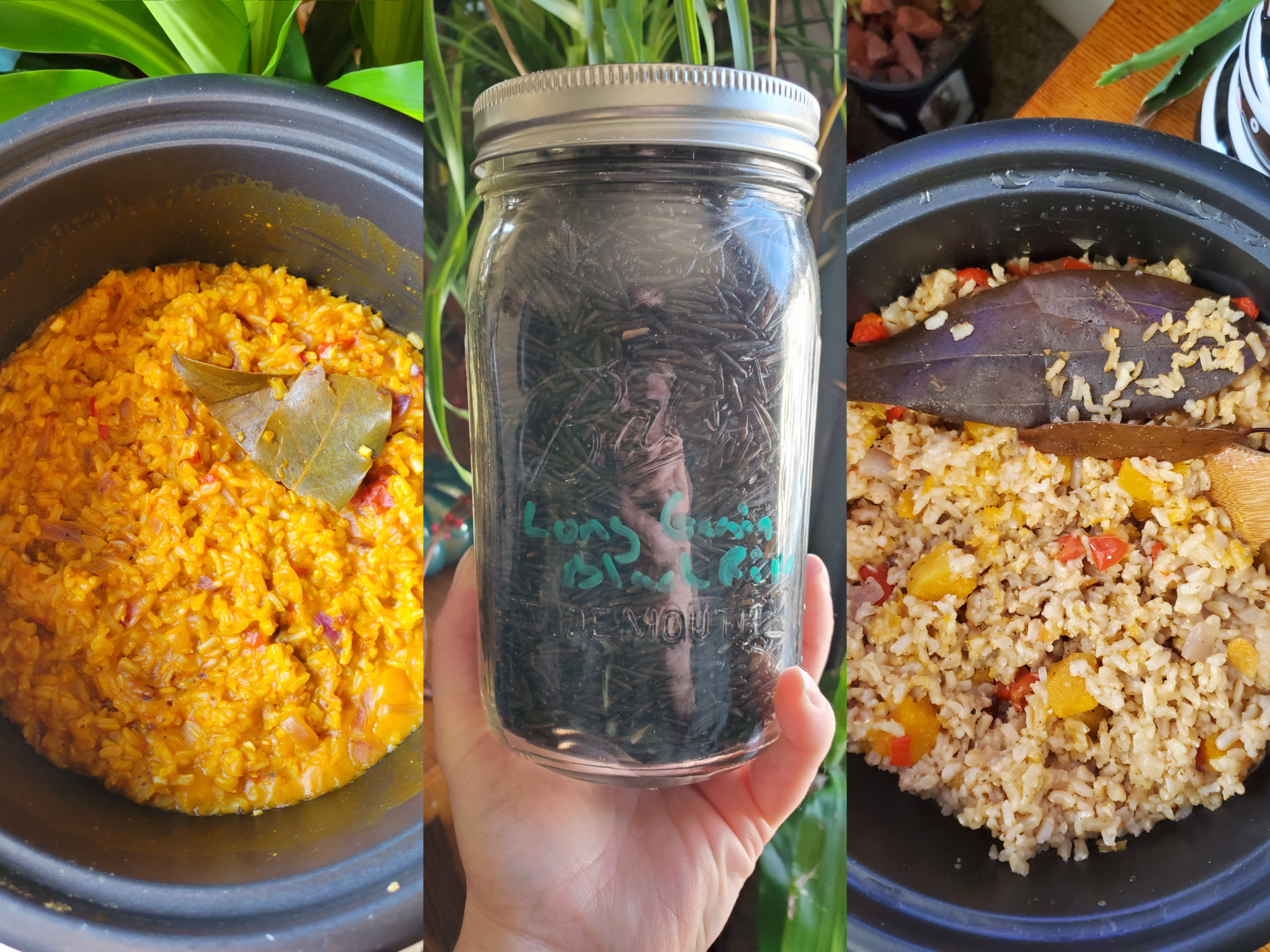
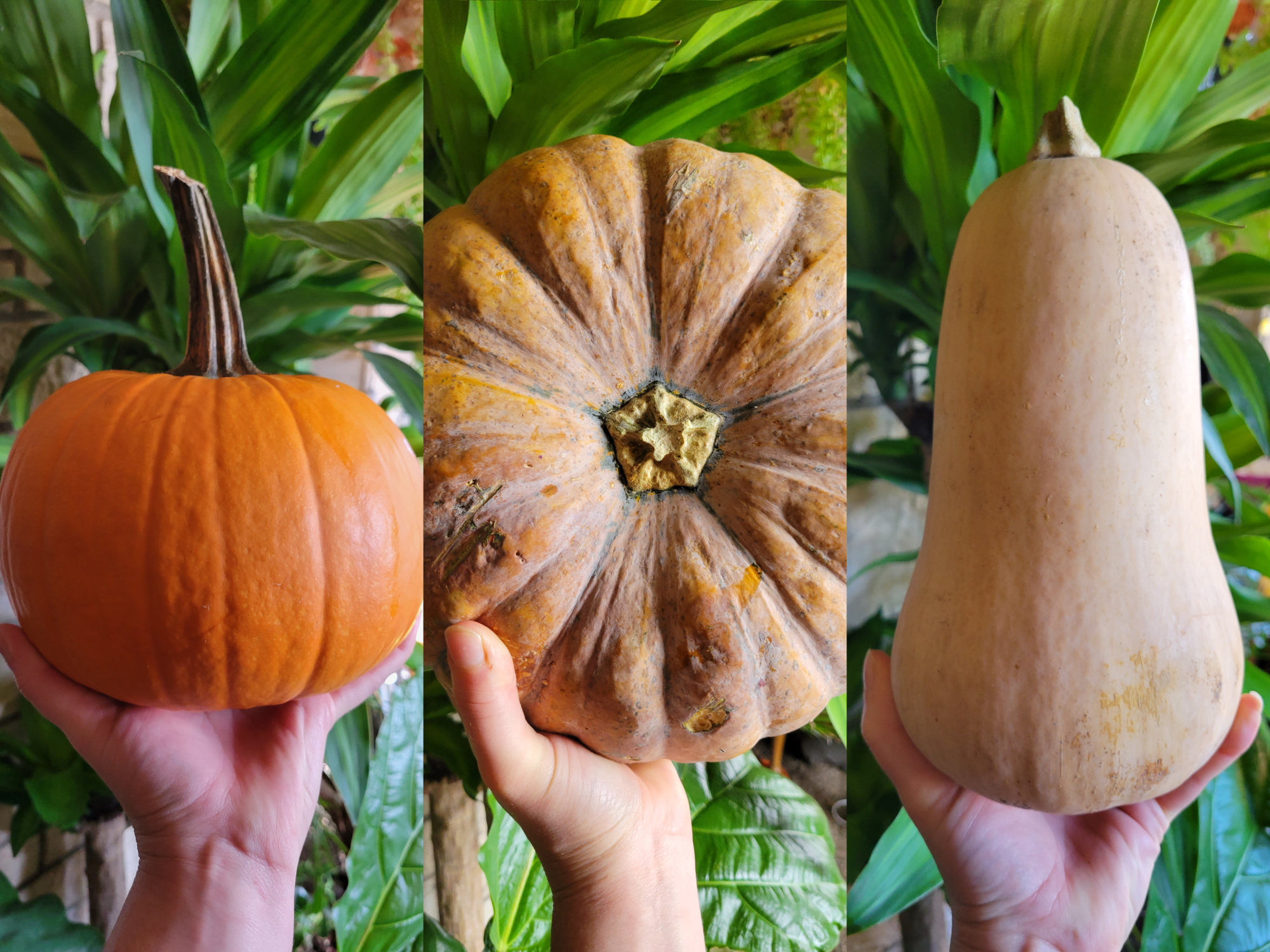
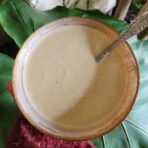
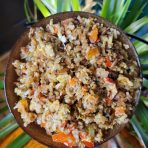
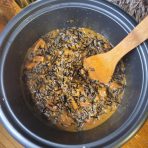

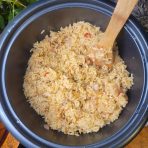


Leave a Reply